Learning how to plant a Jane magnolia tree is easier than you might think. It starts with learning a bit about why you’d want a magnolia tree, and why the Jane magnolia is a good choice. With pink blooms and a massive spread, this is a tree that truly makes a beautiful statement in your landscape.
When most people think of magnolia trees, they picture the large, white flowers of the Southern magnolia (Magnolia grandiflora). However, there is another type of magnolia tree that is well worth planting: the Jane magnolia.
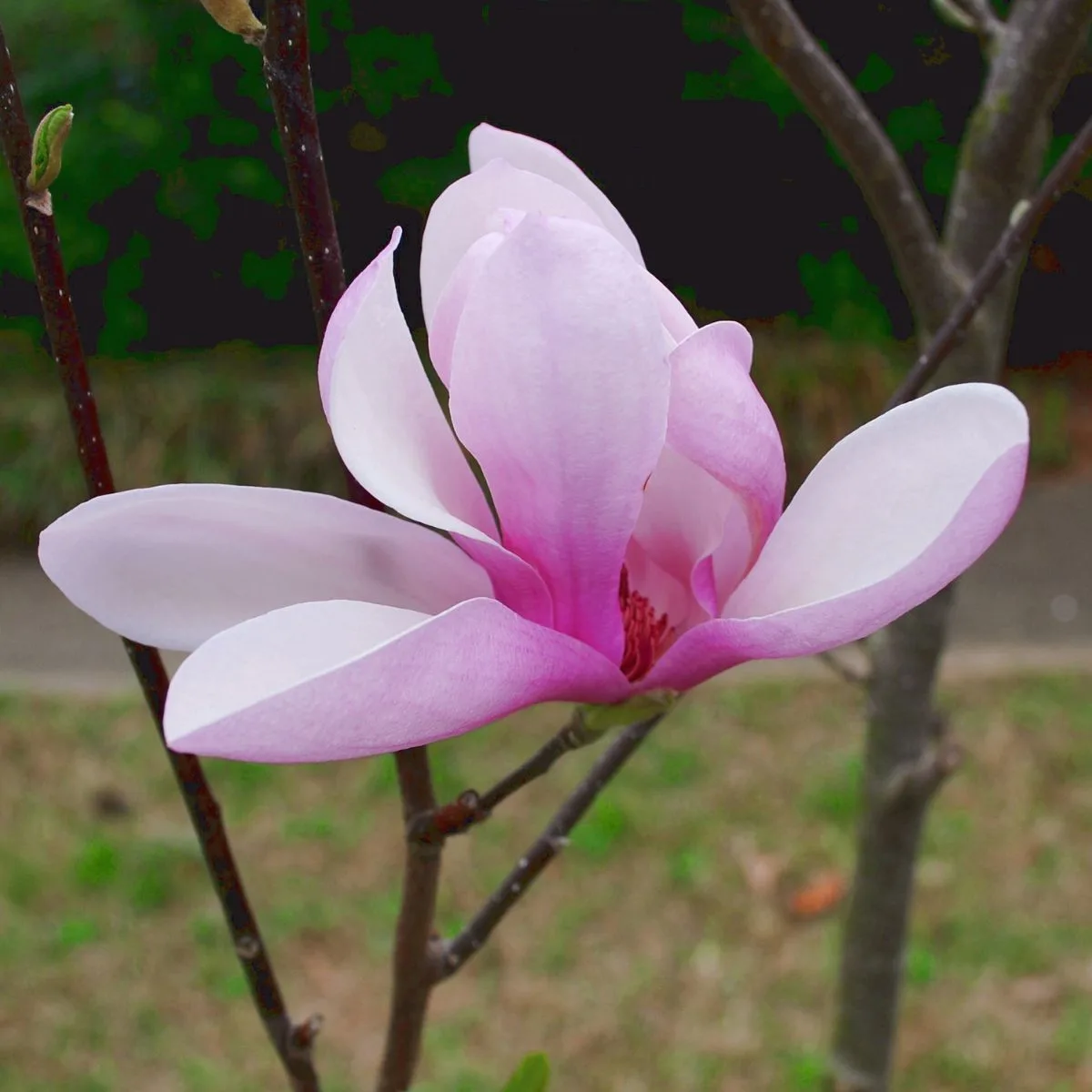
Disclosure: I received a free Jane magnolia tree from My Perfect Plants, and I can’t wait for spring to see this tree bloom!
I have a coupon code for you! Enter BACKYARD10 at checkout and get 10% OFF anything in their store! Have fun!
What Are Jane Magnolias
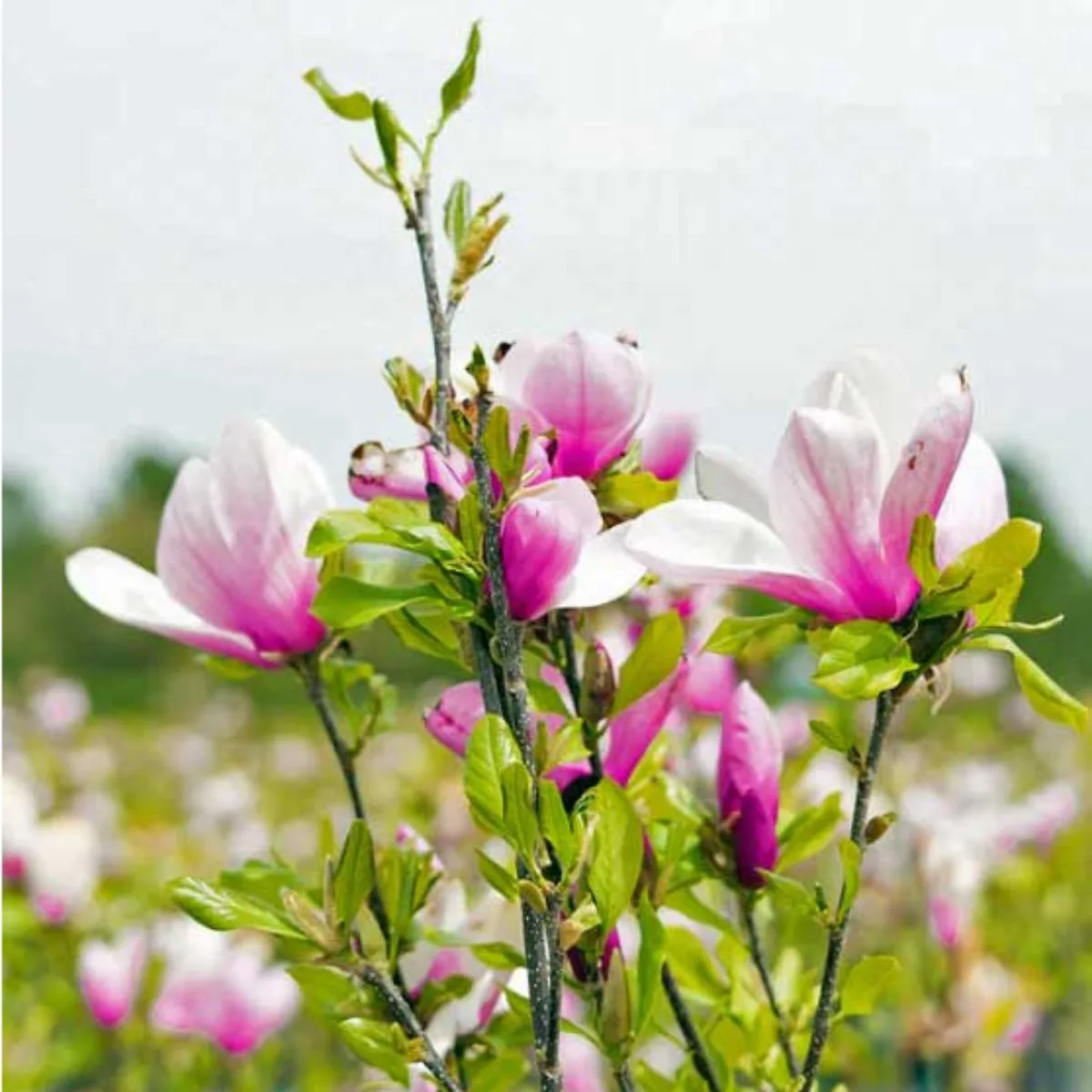
The Jane magnolia, or Magnolia x loebneri ‘Merrill’, a member of the “little girl” series, is a hybrid magnolia that was developed in the early twentieth century. It is a cross between the Yulan magnolia (Magnolia denudata) and the star magnolia (Magnolia stellata). They are smaller than the common Southern magnolia, and they are more cold-hardy.
This magnolia is a deciduous shrub or small tree that typically grows to 15 feet tall. It has fragrant, pale pink flowers that bloom in early spring. It’s also a popular landscaping plant in temperate climates. It is relatively low-maintenance and can tolerate a wide range of soils and sun exposures.
How to Prepare the Site for Planting a Jane Magnolia Tree
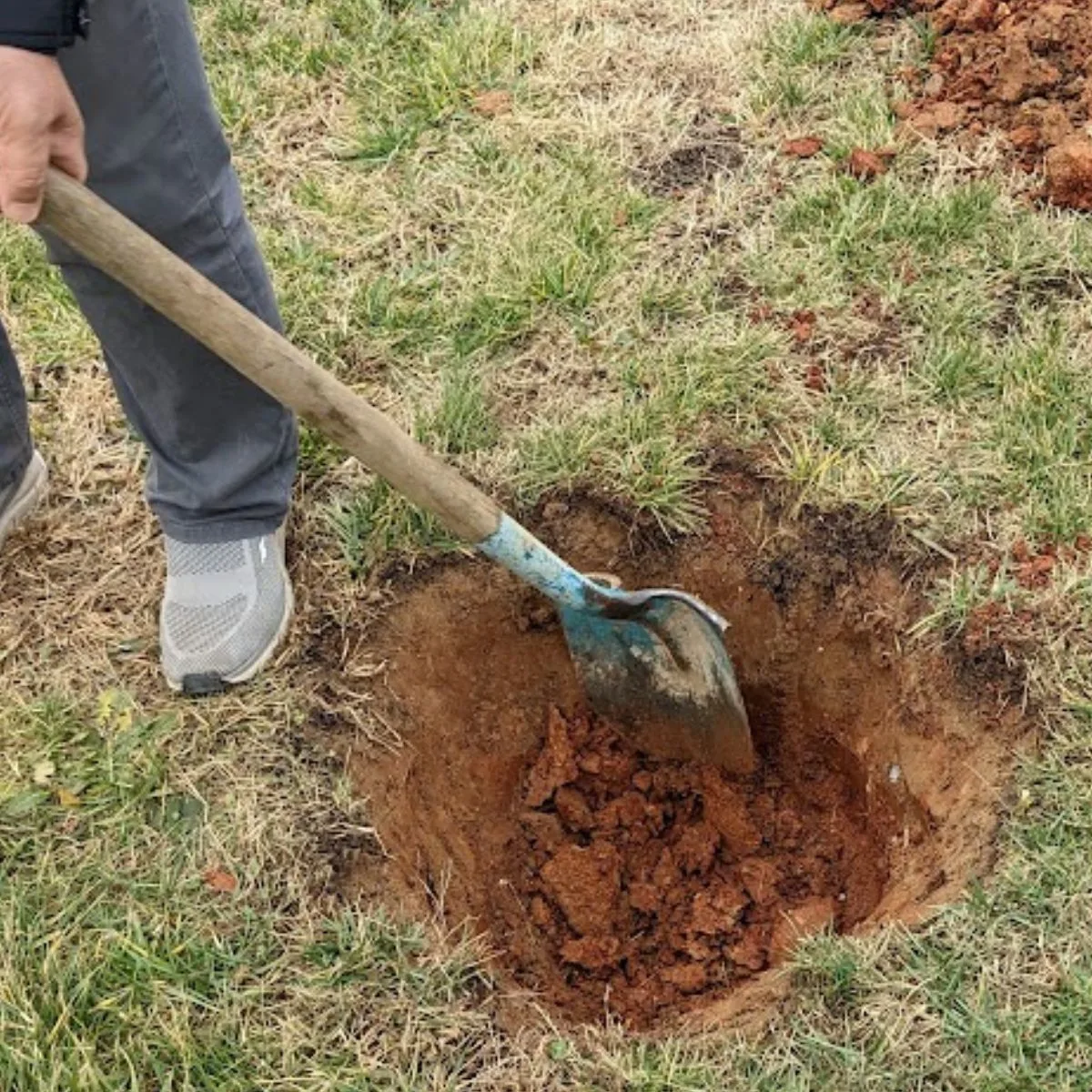
Before you plant your Jane magnolia, it’s important to learn how to prep the site. First, you need to choose your location to plant.
Jane Magnolia can grow in moderate shade, but growth and flower production are best in full sun or partial shade. In Northern climates, planting in a location with some wind protection may be best for the Jane’s large leaves and soft wood.
Magnolias grow well in organically rich, well-drained soil and neutral to acidic soil. Ideally, the soil around your planting location should be evenly moist but not soggy.
Once you have selected the site, you will need to dig a hole that is twice as wide as the tree’s root ball and just as deep.
Jane magnolia trees are very cold-hardy, up to USDA Hardiness Grow Zone 4. If the ground isn’t frozen more than 3 inches below the surface, it is fine to plant. Even if the top layer of soil is frozen, if they can dig the planting hole, it is okay to plant the Jane Magnolia.
When the tree arrives (get one from Amazon), loosen the soil around the root ball to encourage new root growth. Dig a hole about twice as wide as the container and place the plant down to the top of the root.
After the hole has been dug, you will need to remove any grass or weeds from the area and loosen the soil around the edges of the hole. Once the site has been prepared, you can proceed with planting your tree.
How much space does a Jane magnolia need?
The tree can grow up to 15 feet tall and 10 feet wide when fully matured, so it is important to choose a planting site that will allow the tree enough room to grow.
How far do Jane magnolia roots spread?
And are the roots invasive? These are also great questions. Jane magnolia roots typically spread between 2 and 4 feet from the trunk of the tree. However, the roots can sometimes spread up to 6 feet from the trunk, depending on the soil conditions and the age of the tree.
Additionally, the roots of a Jane magnolia tree growing in sandy soil will typically be wider-spreading than the roots of a Jane magnolia tree growing in clay soil. Given these variables, it is difficult to say definitively how far Jane magnolia roots will spread. However, gardeners should be aware that Jane magnolia roots can spread further than many other types of trees.
This means you should take care to plant them accordingly and be mindful of structures and sidewalks or other things that may be close to where the roots will grow.
First, you need to remove the plant from the nursery pot. You want to wet the soil inside the pot before you begin. This makes it easier for it to loosen up and come out. Then, turn the pot on its side and gently slide the root ball out of the pot.
If it starts to stick, gently use a long-bladed knife on the edge of the pot to loosen it up and wiggle it out. Gently loosen roots as you go. They may be stuck to the sides and bottom of the nursery pot, and you don’t want to just yank them free.
Once it’s free of the pot, it’s time to put it in the hole you dug.
Ideally, mix in some organic gardening soil with the soil dug out for the planting hole. Having about a 50-50 mix is ideal. Place the root crown in th4e middle of your hole so that the top of the roots is at ground level.
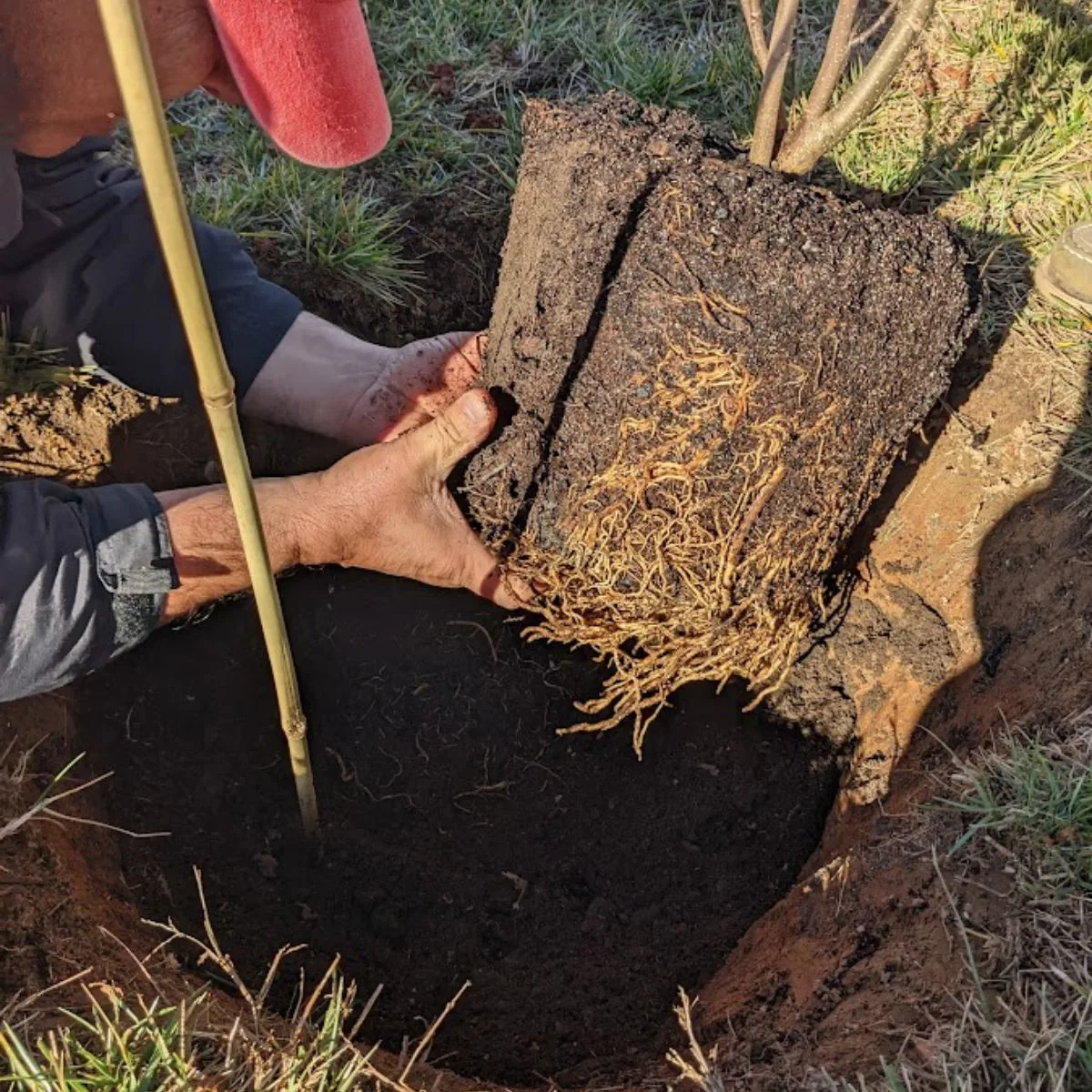
Next, you can spread the side roots a bit and backfill the hole. Work this loose soil in gently around the roots. Once the hole is about half full, go ahead and give the roots a good soak.
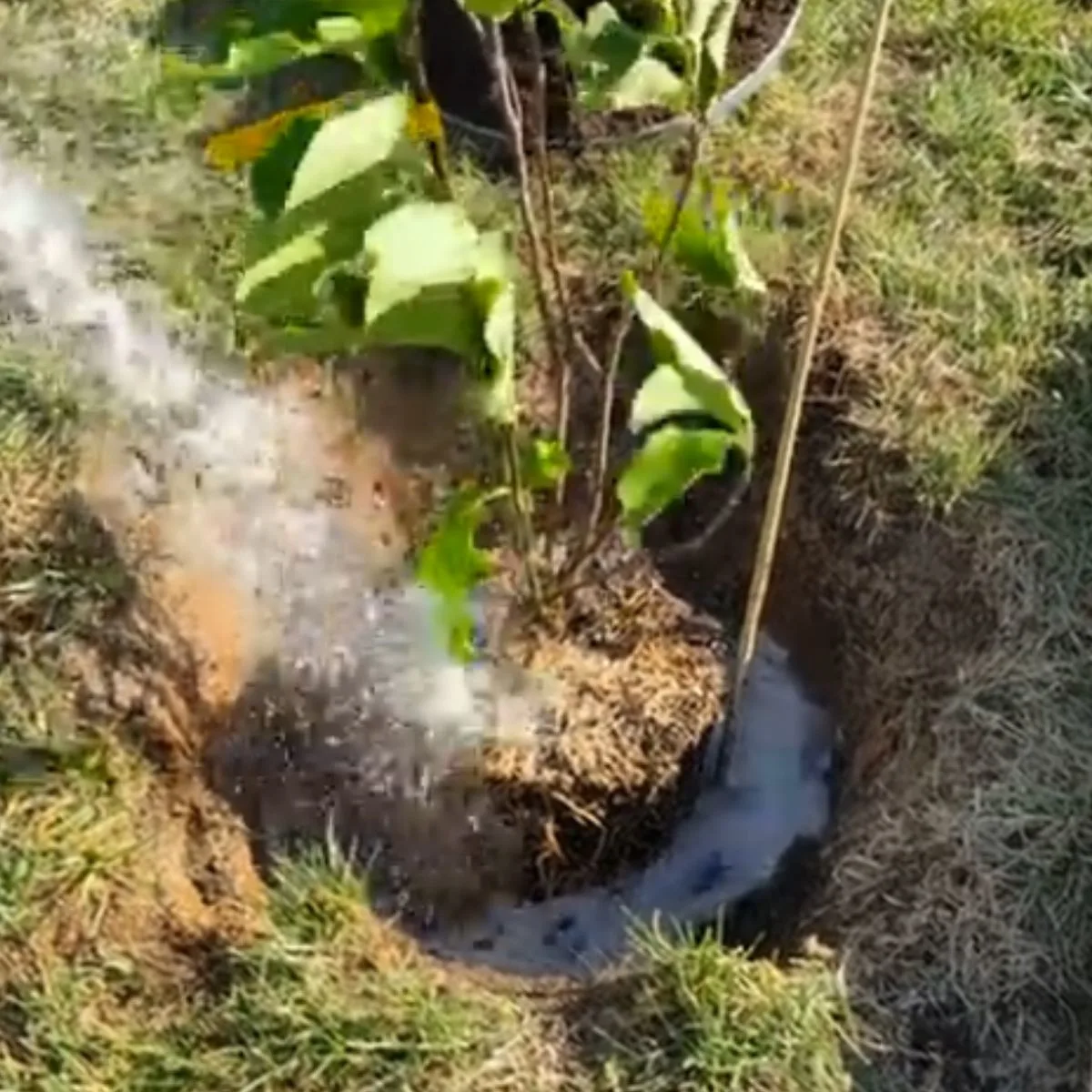
Once this water has drained, finish filling the hole. Tamp the soil down with your hands or feet (not with garden tools), and then you’re done.
If you live in deer country like we are, you might need to build a wire cage to protect your brand new tree until it gets established.
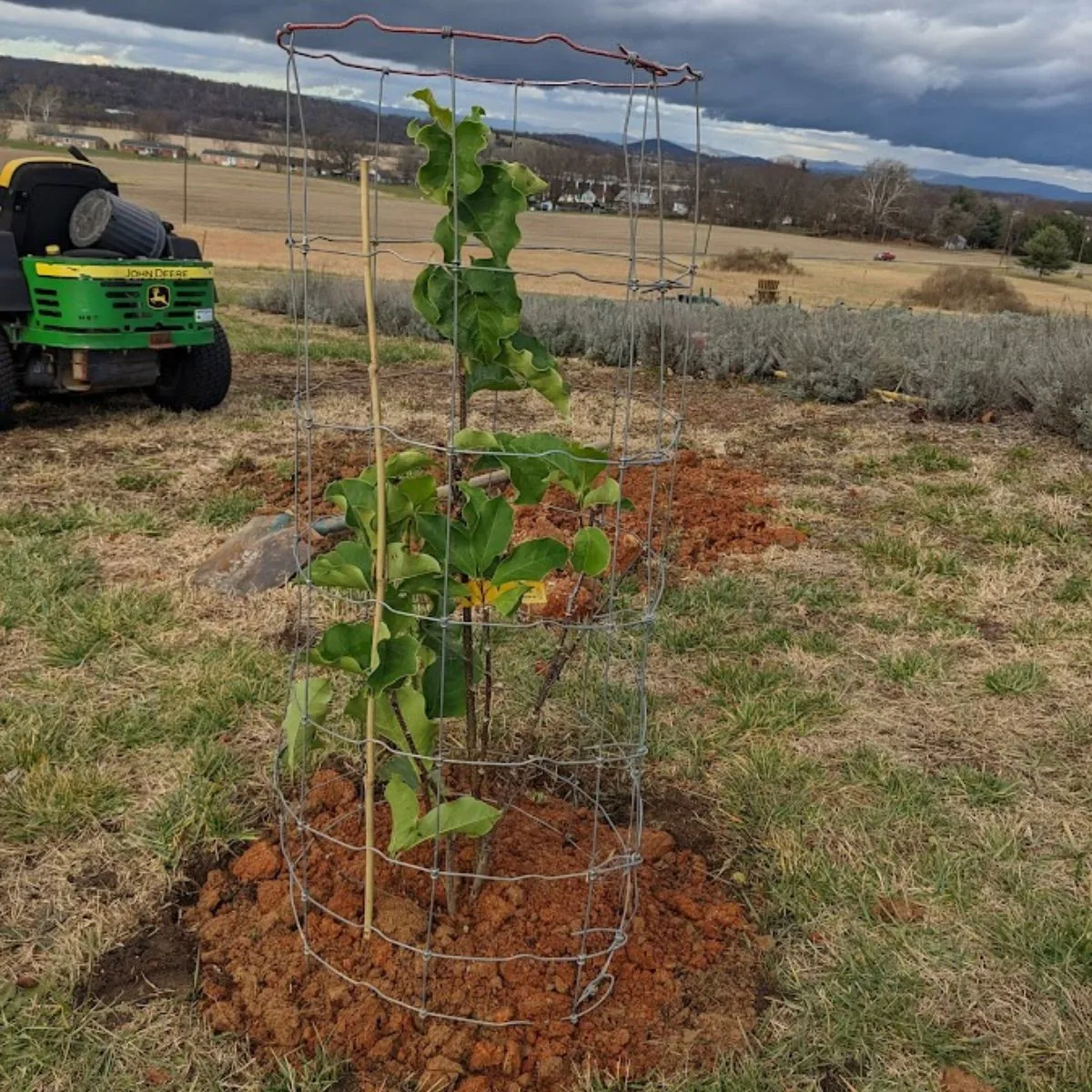
You can then use your hands to build up about 3-6 inches of soil around the ground outside the root zone. Mulch appropriately to help retain moisture, but make sure you don’t add more than 3 inches of mulch. This helps protect the roots at the base of the tree.
Water the soil thoroughly now, and be sure to water well the first year after planting to establish a strong root system. You can use straw, leaves, pine needles, grass clippings, or compost as mulch as well.
How to Care for Jane Magnolia
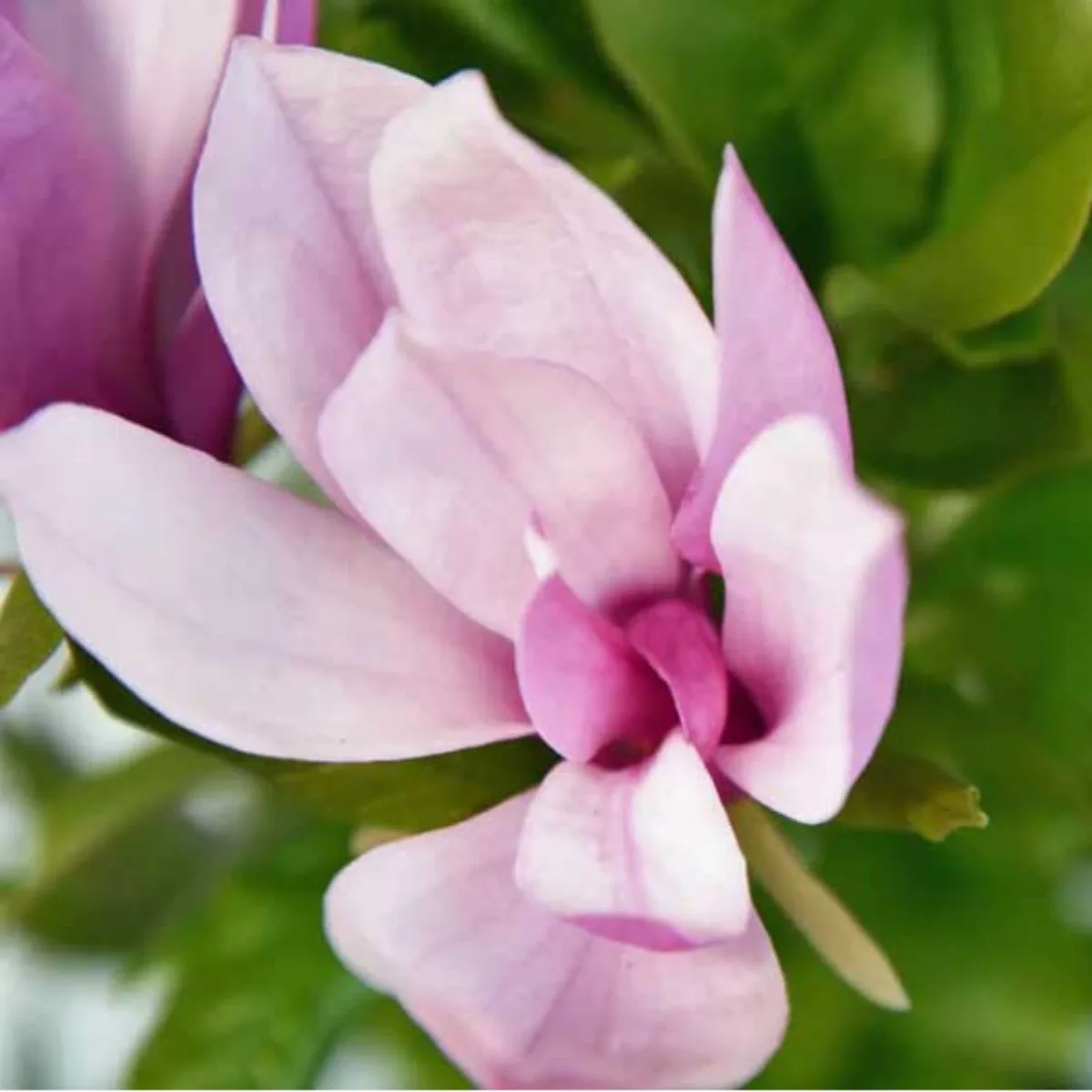
Once you’ve planted this shrub, you just need to tend to it properly. This involves understanding the plant’s needs for:
- Soil
- Watering
- Light
- Temperature
- Wind
- Fertilizer
Jane Magnolia prefers slightly acidic soil. To enhance the flower colors, the addition of acidic sulfur or peat moss in early spring can help. Avoid using mushroom compost on this plant as it can impact the pH balance of the soil.
You should use stakes and lines to help stabilize new growth from the wind.
The Jane magnolia can also benefit from the addition of slow-release fertilizer once a year, in the fall. This will help with pests and diseases such as powdery mildew as the magnolia grows. however, don’t fertilize a newly planted tree: wait until the following growing season.
Pruning is not necessary, but if you wish to shape the tree, it is best done in late winter or early spring before new growth begins. This will help avoid bleeding of sap. Jane magnolias can be maintained as a shrub bush or small tree. They require little pruning other than to promote a balanced, strong frame when young and to remove dead or damaged branches.
Pests and Diseases
As with any plant, the Jane magnolia is susceptible to a wide range of pests and diseases, which can cause damage to the tree and reduce its lifespan. Some of the most common problems include scale insects, leaf spot, powdery mildew, root rot, and Japanese beetles.
Thankfully, there are a number of ways to combat these challenges, including using pesticides and fungicides, removing affected leaves or branches, and providing the tree with extra water or nutrients.
How to Use Jane Magnolia in Landscaping
Jane magnolia is an excellent choice for use as an accent tree or in mass plantings. It also makes a lovely focal point in a garden or backyard.
This tree grows fairly slowly, at less than 12 inches per year, so keep this in mind when planning your landscaping. It has big, beautiful flowers that will bloom and bring a pop of color to your landscape, but if you’re looking for fast growth or something to provide privacy and shade, this may not be the best option for that.
When your tree is young, you can also plant around it. A shade-loving ground cover would be perfect. But once the tree is mature, it’s best not to dig around the roots. Instead, you can do a thin layer of mulch under the canopy.
Can You Grow Jane Magnolias in Pots?
Jane magnolia trees are a beautiful addition to any landscape, but they can also be successfully grown in pots. Jane magnolia trees do best in full sun or partial shade, and they need well-drained soil that is rich in organic matter.
When planting Jane magnolia trees in pots, choose a pot that is at least 18 inches wide and 18 inches deep. Be sure to use a high-quality potting mix, and water the tree regularly to keep the soil moist but not soggy.
And understand that a potted magnolia tree will be smaller than one growing in the ground (of course, it’ll be just as beautiful!).
Now that you know how to plant a Jane magnolia tree, you may want one blooming in your garden. Get one from My Perfect Plants or, if you prefer, Amazon has Jane magnolias here!
FAQs
Here are some common questions people ask about this type of magnolia tree.
Is Jane magnolia a bush or a tree?
Jane magnolias can actually be trained into either a shrub or a small tree.
Do Jane magnolias lose their leaves in the winter?
Yes, since Jane magnolias are deciduous, they lose their leaves in the winter.
How long does a Jane magnolia live?
With proper care, a Jane magnolia can live for 50 years or more.
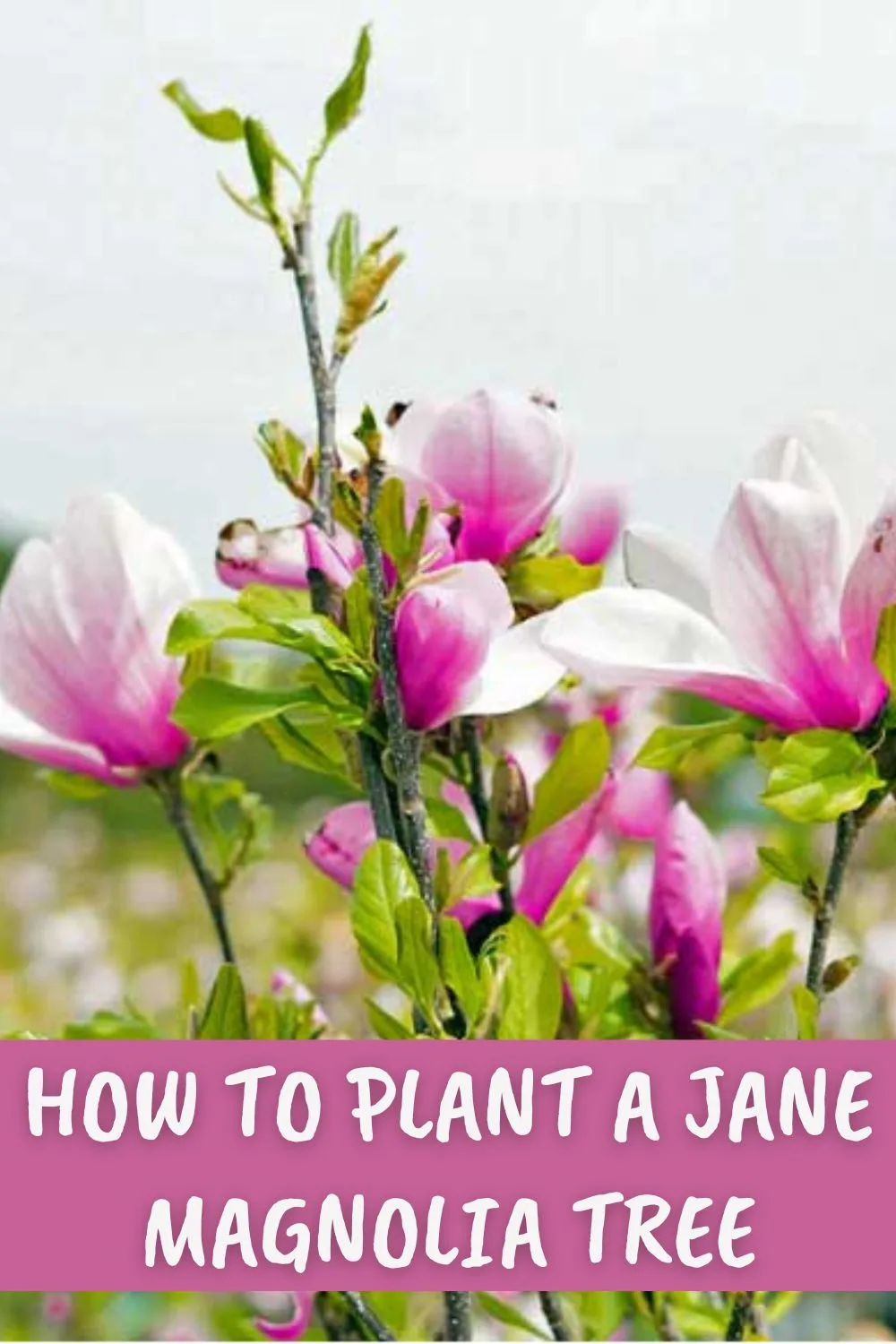




 ?. ts.dhung.
?. ts.dhung.
